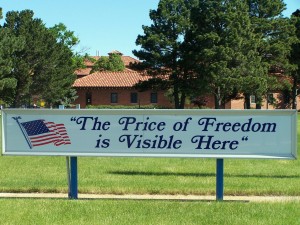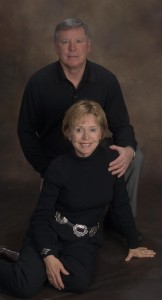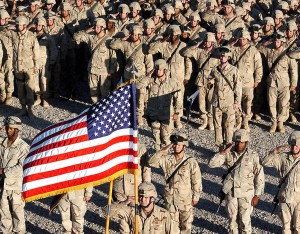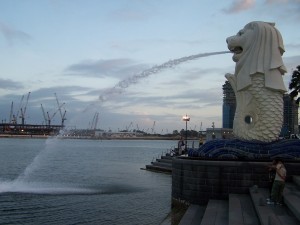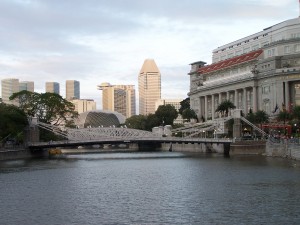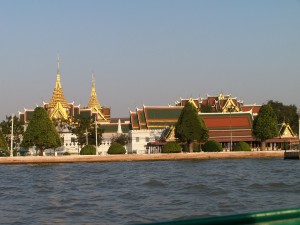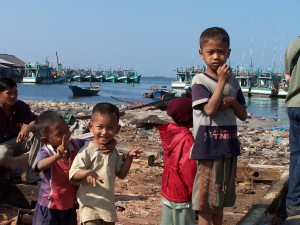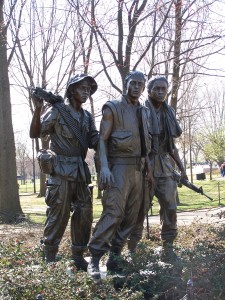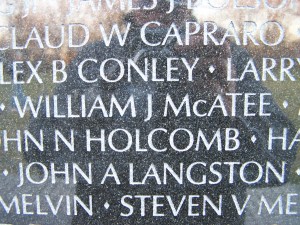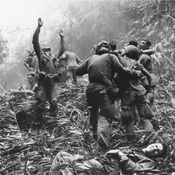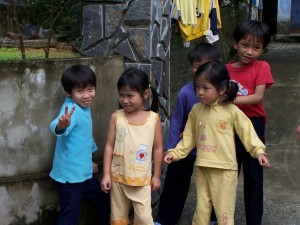Jan
30
Healing Ain’t Easy
Filed Under Treating PTSD | Comments Off on Healing Ain’t Easy
Hello everyone. We have been back from our trip to Vietnam/Cambodia for ten days now. Getting our sleep patterns to normalize has been more challenging than getting our daily routines into a new rhythm. Before we left, I mentioned that we learned a few breathing strategies to use just in case Tony was triggered by a sight, sound, smell… from combat. Tony admitted that the breathing was useful on a few occasions, but he never felt that any of the experiences were overwhelming – another milestone in the lifetime journey of healing. Yea! Yesterday, we went to Cheyenne for a second session of EMDR (Eye Movement Desensitization and Reprocessing) with a veteran’s service therapist. EMDR has been used since the 1980’s with individuals who have experienced a wide range of traumatic events ranging from car accidents, rape, domestic violence… and combat PTSD. The purpose of EMDR is to help the individual reprocess the event in a manner that is not as emotionally volatile, thereby, reconciling the experience into something that is more acceptable to the sufferer. Truthfully, we do not know if this particular type of therapy will work with Tony’s PTSD, but it is worth a try. We know of many non-vets who have told us stories of how EMDR helped them. Since I am being allowed to be part of these sessions, I have already had a few significant Aha moments. The first is getting the patient to move from a cognitive processing mode (in the head) to a feeling mode (in the body), which can be incredibly difficult. Modern man (and woman) has an enormous need to control his environment. It makes us all feel a bit safer when we believe in this illusion of “control”. To move from analyzing everything we experience through our heads and think about how our body is responding; i.e., anxiousness, faster heartbeats, headaches, stomach cramps… is something not many of us think about on a regular basis. In fact, we often take a pill to make the emotional cramping go away. EMDR’s focus is on the “body feeling”. In neuroscience terms, it is an attempt to get both body and mind in closer alignment which, hopefully, allows a person to live in a healthier state of being. The second Aha for me was this: The full impact of a stressful event isn’t when the traumatic event took place, i.e., the utter horror of combat, the killing, the IED explosion…It begins far before that event. It begins before the person landed in the foreign country, got into the car, or encountered the threat. All of the sensory information that came before the actual event were also encoded into the body/brain. So Tony’s beginning started when he received his orders to go to Vietnam: as he boarded the plane, when he first walked off the plane, and when he was being processed in Vietnam for his combat assignment. Wow, what a revelation this was to both of us. I thought that we were only dealing with the trauma from the really terrible experiences. No wonder this thing we call PTSD is so powerful and full of ghosts. It began sooner and there were more ghosts than we ever imagined. No wonder so many vets aren’t excited about therapy. It is enormously difficult, scary, and unsettling work. Not only does it take huge amounts of courage and persistence, it takes a strong support system to stand beside, listen, and observe the wounded. This part of the healing journey may be more complex than we ever thought. I’ll keep you posted as we take one small step at a time. I’m thinking this may be a good time to stock up on comfort food and lots of dark chocolate.
Jan
23
Home
Filed Under Return To Vietnam | Comments Off on Home
Following are some final thoughts on our trip to SE Asia. It has been a privilege to be able to take this journey. We saw and gained a deeper understanding of how closely, yet varied, different cultures and people are in this world. The children especially touched our hearts for they were like children everywhere – full of giggles, curiosity, and joyfulness. One obvious difference however is the fact that most American children do not have to beg for money or sell trinkets in the street to survive. Realizing that this behavior is an essential element of their daily survival pulls at your heartstrings. Of those children fortunate enough to attend school, each must have families or a sponsor able to pay for the child’s education. English lessons begin in first grade so students are able to converse quite articulately at an early age. In their young eyes, America and the Western World is the land of opportunity, which is why learning English is so important to them. It can become their ticket to a better life.
Towards the end of our trip, an excerpt from the Daily Word, which I read each morning, was especially profound as it sums up the essence of our experience. “We unite in expressions of happiness. We exchange the jubilance of the human spirit with abilities to inspire one another, to thrive individually, and to expand joyfully amidst a multitude of life happenings.”
By all accounts, this past three weeks was truly an amazing journey. Tony did incredibly well on his “Return to Vietnam” and we were enlightened by the people in every place we visited. In closing, we want to say how much it has meant that so many followed our experience through our website blog. Everyone’s support and feedback has been tremendous!
Jan
18
I Love the USA
Filed Under Return To Vietnam | 5 Comments
Hurray! We are now back on American soil, and again, we are reminded of how very much we love this country. Visiting Vietnam and Cambodia made it clear how very precious freedom is to a country, a people, and to us as individuals. To all those who have served America or are currently serving our great country abroad, thank you. While flying from Singapore and changing planes in Tokyo this morning, we came upon several young soldiers returning to the USA on R&R from Iraq. Tony gave each of them a small card with the words, “Thank You For Serving.” Only wish you could have seen their faces. Wow. Actually brought tears to our eyes knowing that they will soon have to return to combat in a few short weeks. At any rate, this was an amazing trip/journey. Tony did incredibly well and we truly enjoyed the people in every place we visited. Following almost 3 weeks of non-stop travel, we have been flying two days without much sleep since leaving Singapore, yet, before we go to bed tonight in our warm, cozy home, we want to say how much it has meant that so many of you have kept up with our blog. We have indeed received much joy and encouragement from your prayers and support. With gratitude,
Jan and Tony
Jan
18
Singapore
Filed Under Return To Vietnam | Comments Off on Singapore
Singapore is an island micro-state located at the southern tip of the Malay Peninsula. It is one of four remaining true city-states in the world. It is the smallest nation in SE Asia. The small island of Singapore, prior to European settlement, was a Malay fishing village at the mouth of the Singapore river. Much of the culture remains today. Later it became one of the most important trading and military centers in the British Empire. Singapore was occupied by the Japanese during WW II and reverted back to British rule following the war. It became an independent Republic in 1965 and has become one of the world’s major economic and tourist centers since that time. Today Singapore is a diverse cultural mixture of many different nations with a predominate Asian influence. It is truly a mixture of old and new customs with the statue of Merlion (mermaid & lion) overlooking the beautiful harbor and safeguarding this intriguing city-state on the southern tip of Malaysia just north of the equator.
Jan
16
Singapore
Filed Under Return To Vietnam | 2 Comments
We have arrived in Singapore. Talk about a modern city! Everything is new! Building construction along the harbor and waterfront canal has all taken place in the past 40 years! What a contrast with so much of what we have seen elsewhere………………..especially in Vietnam & Cambodia.
Tomorrow we plan to venture outside the city proper and take in the local culture and history of this unique land.
Jan
14
Bangkok, Thailand
Filed Under Return To Vietnam | 3 Comments
Modern Day Bangkok is quite the contrast from most of what we experienced in Vietnam. Much of the city’s business district proper is more like New York City than SE Asia. We have to remember, while much of SE Asia has been at war most of the past century, Thailand has been at peace.
Very cosmopolitan. Once we ventured into the outskirts, we then experienced the true culture and history of this noted place. Temples everwhere! The Grand Palace, Temple of Dawn, Old Bangkok……all were very impressive and allowed us to truly view some of the greatest monuments the world has ever seen. The river transportation system was facinating and a wonder to experience. With the majority of the population Budhists, there were monks everywhere.
The Night Walk……………..very interesting indeed! Two days in Bankok. Wow, what a special place to visit. Now it’s time to get some sleep…
Jan
14
A Land of Trauma
Filed Under Return To Vietnam | 4 Comments
It is Wednesday, January 14th and we just arrived in Sihanoukville, Cambodia. If anyone every forgets to thank the greater universe for his/her daily blessings, take a few hours to visit here. Cambodia is an entire country experiencing PTSD – severely tortured and traumatized by the incredible treatment of Pol Pot and the Khmer Rouge. During the “recleansing” of Pol Pot, Phenom Phen, the capital of Cambodia with over one million people, was reduced to a mere 45,000 as the soldier (many of them young boys) murdered the residents or made them flee to the countryside where they ended up starving to death or dying from disease. Between 1975 and 1979, this small country lost over two million people – one million murdered (some for only wearing eye glasses which symbolized an intellectual) and the second million died of malnutrition and other maladies. Our thirty-five year old tour guide was only four when the Khmer Rouge began its reign of terror. His Dad, grandparents, younger sister, and several other relatives died. He, along with many other small children, was taken from his parents to work in rice fields and fed very little. After five years, his mother, who survived wherever she was kept, finally found him and one other sister. Three years ago his mother died from a liver disease brought on by her many years of starvation and torture. In spite of such loss, many of the people seem to possess an irrepressible joyful spirit even if their eyes tell a tale of pain and suffering. The older people appear to be truly wasted, eaten up by the poverty of the environment and the memories of the past. So when you go to sleep tonight say a prayer of infinite gratitude for all that you have, and say another prayer for the many millions of people around the world who have much less. No matter how challenged some of our days may be or feel, they are nothing in comparison to most of the people here.
P.S. Forgot to mention there are still many land mines in the area so it is best to stay on well traveled roads and sidewalks. Yikes!
Jan
10
Return To Vietnam
Filed Under Return To Vietnam | Comments Off on Return To Vietnam
The drive from Halong Bay inland to Hanoi takes over three hours. I feel unsettled and somewhat apprehensive about making the trip into the communist capital city of Vietnam.
Yes, I know the war is over, but that alone doesn’t remove the lingering memories of Ho Chi Minh’s North Vietnamese Army (NVA) assaulting the South by the thousands. Since the French Army’s loss at the battle of Dien Bien Phu, Uncle Ho was determined to overrun South Vietnam and spread communism throughout the entire country. Saigon was the ultimate target, but thousands of battles would occur before that objective was met.
We have named that difficult and tragic time in American history the Vietnam War. The Vietnamese call it the American War – which allows them to distinguish that ten-year period from all the other wars – the war against the Chinese, the French, Japan during WWII, and then again the French, and finally against America. JFK had asked a nation “Ask not what your country can do for you, but what you can do for your country.”
In 1968, I found myself, along with thousands of other American youth answering that calling – we were patriotic – proud to serve our country. I was a young army officer at 21, older than most. How soon we would all age beyond our years.
Somehow, driving into Hanoi all these years later seemed unpatriotic. The country has been opened to tourism, albeit with a multitude of restrictions associated with communist rule. We visited Ho Chi Minh’s Mausoleum where his body has been immortalized for all to see since his death in 1969. Next we visited the Hoa Lo prison, “Hanoi Hilton”, where several hundred American pilots were tortured and held captive, including John McCain.
The photos in the Hanoi Hilton showed prisoners in various scenes “enjoying” their captivity. The propaganda was obvious to those of us who understood the realism of war, but to some of the more gullible individuals, the “upscale” conditions of the prison were impressive.
I was relieved and glad to leave the suffocating environment of Hanoi.
Later in the week, we moved southward into Danang and Hue, that portion of Vietnam below the DMZ more familiar to Americans – especially for those who served during the war. The battles of Khe Sanh, the Rockpile, Hue, and Operation Rolling Thunder are all too familiar. Although I was stationed further southwest along the South Vietnam / Cambodia Border, I had flown into the airfield at Danang. The sea of military vehicles and personnel are long gone, but the area looked much the same as I remembered it. Considerable development has occurred south of Danang and adjacent to China Beach, but much of the city appeared relatively unchanged from decades prior. The ridge line to the west of Danang, toward Dai La Pass, still was draped in clouds and looked as ominous as ever. And yes, the Viet Cong where still there, only today everyone is under communist rule so we no longer have to anguish over the dilemma of friend or foe.
Two days later, we arrived in Saigon (Ho Chi Minh City) although most of us still call it Saigon as do the residents of Vietnam. We drove past the Tan Son Nhut airport and moved into the city proper. Following a tour of Saigon and visiting the war museum, which featured a U.S. Army Uh-1 helicopter, an F-5 Air force fighter, a Sky hawk, and an army tank – all displaying a large emblem of the communist red star painted over the U.S. insignia.
That was enough tourist attraction for me…
Jan and I walked past the noted Continental Hotel and stopped at the Rex for an afternoon break.
The rooftop view from the outdoor lounge of the Rex Hotel allowed a panoramic glimpse of the city. We ordered a Saigon Sling and a Manhattan which somehow seemed appropriate. As I mellow-out and reflect on the war, I couldn’t help but remember all who had made the supreme sacrifice and had not returned home. As if it was yesterday, I remember my friend Bill McAtee from Hanna. We had been in contact and planned to meet in Lai Khe, my division base camp, in early December. The reunion never happened. Within three days of our meeting, I was wounded in action and Bill was killed. And of course there were many others. I also reflect on my high school and college classmates whose lives would forever be changed by the war. There was George Patton, Bill Blom, Dick Butler, Bill Bellamy, and the list goes on…
Today, on my birthday atop the Rex Hotel in downtown Saigon, I remember and celebrate their service to our country. Somehow I would like to think we made a difference.
Jan
9
Unexpected Goodness and …
Filed Under Return To Vietnam | 6 Comments
We have now visited Hanoi, Halong Bay, Danang, Hoi An, and today we are in Ho Chi Minh City (Saigon). It has been a very interesting and wonderful adventure in becoming more knowledgeable about the culture, customs, geography, and of course the people of this area. What has struck me the most is the very graciousness of the individuals we have meet and spent time with during the trip. The Vietnamese people are very much attached to their past through religion, stories, and myths. Every place has its own special tale and symbol attached to it, such as the Dragon in Halong Bay that came down to protect the people many centuries ago. To do so, it spate out thousands of diamonds, rubies, etc. which became small island that kept invaders from being able to sail straight into the bay. A beautiful vision to be sure. The only negative comment we have heard on this entire trip, interesting enough, has come from an American who never served in any conflict. His attitude was something like “I really don’t believe in PTSD”,”get over it”, and “that’s your problem”. I immediately thought of Colonel Knowlton of the Wyoming Nation Guard – veterans don’t want to talk much about their services, they certainly don’t want sympathy, but perhaps a simple, heartfelt Thank You would be nice. This American gave the deepest dagger into an already wounded soul.
Jan
9
Saigon (Ho Chi Minh City)
Filed Under Return To Vietnam | Comments Off on Saigon (Ho Chi Minh City)
Actually the city is still called Saigon by local residents and much of the rest of the world. Somehow that was comforting in its own small way…
Saigon, more than any other place in Vietnam, is embracing a capitalist approach to tourism and welcoming outside investments. With 10 million people, the city is busy but continues to upgrade its lifestyle. It looks and feels less like a third world country than anywhere we have been in-country. Since the outskirts of Saigon was my first contact with Vietnam during the war, the memories are also more alive in this place. I remember the intense heat and humidity. I remember how beautiful the land was, even in time of war. I also, and more graphically, remember the sacrifices made by those who served. Its those memories that are most vivid…the horrors of war.
Now Jan & I are going to stroll along the streets and appreciate this place for what it is now and for what it is striving to become. But we will also never forget the past and especially those who never returned home.


